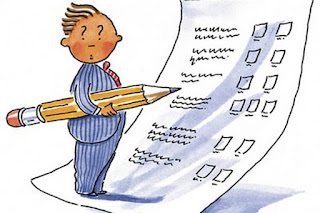- Project-based learning is not a new educational method.
- The use of multimedia is a dynamic new form of communication.
- The merging of project-based learning and multimedia represents an extraordinary teaching strategy that we call project-based multimedia learning.
- Guidelines for Implementing and developing your own units based on this strategy.
- By project-based learning – we mean a teaching method in which students acquire new knowledge and skills in the course of designing, planning, and producing some product or performance.
- By multimedia – we mean the integration of media objects such as text, graphics, video, animation and sound to represent and convey information.
- Project-based multimedia learning – is a method of teaching in which students acquire new knowledge and skills in the course of designing, planning, and producing a multimedia product.
Dimensions of Project-Based Multimedia Learning Project
Core Curriculum
- At the foundation of any unit of this type is a clear set of learning goals drawn from whatever curriculum or set of standards is in use.
Real-World Connection
- Project-based multimedia learning strives to be real. It seeks to connect students’ work in school with the wider world in which students live.
Extended Time Frame
- A good project is not a one-shot lesson; it extends over a significant period of time. It may be days, weeks or months.
- The actual length of a project may vary with the age of the students and the nature of the project.
Students Decision
Making – students
have an opinion.
- Divide them into “Teacher” and “Students” based on clear rationale (decisions).
- The teacher can allow students to determine what substantive content would be included in their projects.
- Students can make decisions about the form and content to their final products, as well as the process for producing them.
Assessment – regardless of the teaching method
used, data must be gathered on what students have learned.
- When using project-based multimedia learning, teachers face additional assessment challenges because multimedia products by themselves do not represent a full picture of student learning.
Assessments have Three Difference Roles in the Project-based Multimedia Context;
- Activities for developing expectations.
- Activities for improving the media products; and
- Activities for compiling and disseminating evidence of learning.
Multimedia – as students design and research
their projects, instead of gathering only written notes, they also gather – and
create – pictures, video clips, recordings and other media objects that will
later serve as the raw material for their final product.
Why Use Project-Based
Multimedia Learning?
- Identifying, organizing, planning and allocating time, money, materials, and workers.
- Negotiating, exercising leadership, working with diversity, teaching others new skills, serving clients and customers, and participating as a team member.
- Selecting technology, applying technology to a task and maintaining and troubleshooting technology.
Teaching the New Basic Skills, Richard Murname and Frank Levy (1996) describe three sets of skills that students need to be competitive for today’s job.
- Hard Skills (math, reading, and problem-solving mastered at a higher level than previously expected of high school graduates);
- Soft Skills (for example, the ability to work in a group and to make effective oral and written presentations); and the ability to use a personal computer to carry out routine tasks (for example, word processing, data management, and creating multimedia presentation).














Great tips, many thanks for sharing. I have printed and will stick on the wall! I like this blog. Desentupidora em Osasco
ReplyDeleteThank you so much for sharing in such detail what you do for How to know about project based learning(PBL)?
ReplyDelete